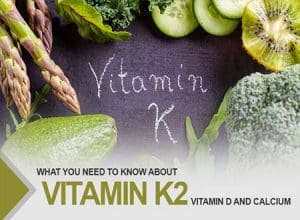



Sulforaphane is an aliphatic isothiocyanate, an is a clinically relevant nutraceutical. Although myrosinase-inert broccoli sprout extracts are widely available, there now exist myrosinase-active broccoli sprout supplements that yield sufficient SFN to match the doses used in clinical trials. It’s being researched at prestigious hospitals and universities like Johns Hopkins as an anti-inflammatory, anti-carcinogen, recovery booster, autophagy inducer, and might even benefit the symptoms of autism.
And that’s why so many people are crazy about drinking juiced broccoli sprouts right now. However growing and juicing fresh sprouts daily is a hassle and it really doesn’t taste that great.
Researchers and doctors at Johns Hopkins are in the process of studying sulforaphane’s potential benefits for:
Over 2,000 peer-reviewed studies on the potential benefits of sulforaphane have already been completed, and many more are underway right now.
“We live in an era where modern medicine is strongly focused on relief of symptoms with pharmaceuticals, providing many solutions to address this demand. It is becoming increasingly apparent, however, that for the diseases which cause most distress at the individual level, pharmaceuticals typically provide only short-lived symptomatic relief. Few if any modern pharmaceuticals modulate fundamental etiological disease processes.”

Review Article Sulforaphane: Its “Coming of Age” as a Clinically Relevant Nutraceutical in the Prevention and Treatment of Chronic Disease
Christine A. Houghton 1,2
1, University of Queensland, St Lucia Queensland, Australia
2, Cell-Logic, Australia
(1) Increases synthesis of glutathione [117]. This has implications for oxidative stress and detoxification as glutathione is the substrate for both pathways. Glutathione is also an antioxidant in its own right.
(2) Inhibits some Phase 1 detoxification enzymes that activate chemical carcinogens [118]. This reduces the level of toxic intermediates with carcinogenic potential. It also allows Phase 2 to “keep pace” with Phase 1 processing.
(3) Increases activity of Phase 2 detoxification enzymes Sulforaphane is considered the most potent of the Phase 2 inducing substances [79]. As a monofunctional inducer, sulforaphane is considered to be a significant component of the anticarcinogenic action of broccoli.
(4) Provides significant antioxidant activity, largely due to its ability to induce glutathione synthesis. Glutathione is a critical factor in protecting organisms against toxicity and disease [119]. The ability of sulforaphane to up-regulate glutathione synthesis is highly significant.
(5) Acts as a histone deacetylase inhibitor, providing DNA protection [120–122]. Development of histone deacetylase inhibitors is a key avenue for cancer drug research.
(6) Induces apoptosis, inhibits MMP-2 (metastasis), and inhibits angiogenesis and cell cycle arrest [28, 105, 123, 124] (interacts at several levels). Therapeutic interventions which exhibit several related actions targeting the same underlying defect are considered highly desirable.
(7) Limits proinflammatory effects of diesel chemicals by upregulation of Phase 2 enzymes [125]. Environmental pollutants are known to contribute to various lung diseases. Removal of the toxins reduces tendency to disease.
(8) Induces thioredoxin (Trx) as part of the ARE. Thioredoxin is implicated in cardioprotection by triggering several survival proteins [126]. Sulforaphane may have beneficial effects in cardiovascular disease.
(9) Bactericidal against Helicobacter pylori and also blocks gastric tumour formation in animals [127]. Helicobacter is known to contribute to development of stomach cancer. Elimination of the organism without the use of Typical antimicrobial Triple Therapy could protect the colonic microflora.
(10) Protects dopaminergic cells from cytotoxicity and subsequent neuronal death (cell culture) [128]. Dopaminergic neurones are associated with Parkinson’s disease. Pharmaceuticals to treat Parkinsonism are not without risk and the disease is not usually detected until more than 50% of the neurones have been lost. A chemoprotective tool could prevent premature loss.
(11) Increases p-53 (associated with tumour suppression) and bax protein expression, thereby enhancing cellular protection against cancer [129]. Sulforaphane is an attractive chemotherapeutic agent for tumours with a p53 mutation [62].
(12) Limits effect of aflatoxin on liver cells [26]. Interventions which can offer significant protection against environmental and food-borne pollutants could prevent the consequences of these factors. Appropriate doses of sulforaphane yielding substances are yet to be determined.
(13) Enhances natural killer cell activity and other markers of enhanced immune function [117]. The immune system is a critical part of the body’s defences against inflammatory as well as infectious diseases. Most diseases benefit from enhancement to immune function.
(14) Suppresses NF-κB, a key regulator of inflammation [117]. NF-κB expression is down-regulated by sulforaphane and as such downregulates inducible proinflammatory enzymes such as cyclooxygenase (COX-2) and NO synthase (iNOS). As an inhibitor of NF-κB as well as an activator of Nrf2, SF modulates many cancer-related events, including susceptibility to carcinogens, cell death, cell cycle, angiogenesis, invasion, and metastasis [117].
(15) Sulforaphane is not directly antioxidant. Instead, it exhibits a weak prooxidant effect [130]. Because sulforaphane is not directly antioxidant but exerts its antioxidant effect primarily by induction of glutathione and other antioxidant compounds, it is considered to exhibit an indirect antioxidant effect.
(16) Potent inducer of HO-1 (haemoxygenase-1). Haemoxygenase-1 plays an important role in modulating the effects of oxidants in the lungs [131].
References Available On Request
Watch Dr. Golding talk on Integrative and Anti-Aging Medicine.
Sign up for our newsletter to find out more about the exciting world of integrative medicine
